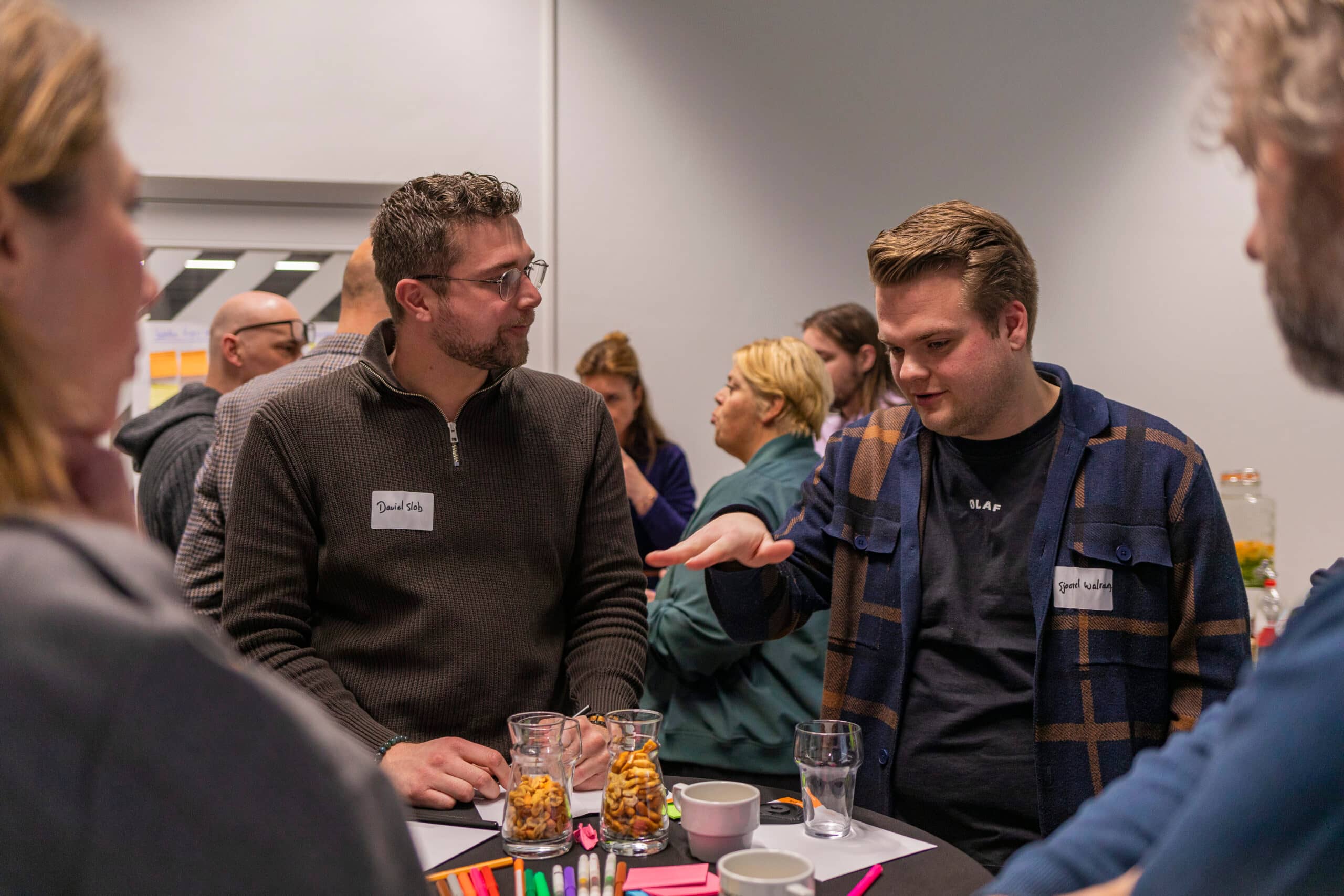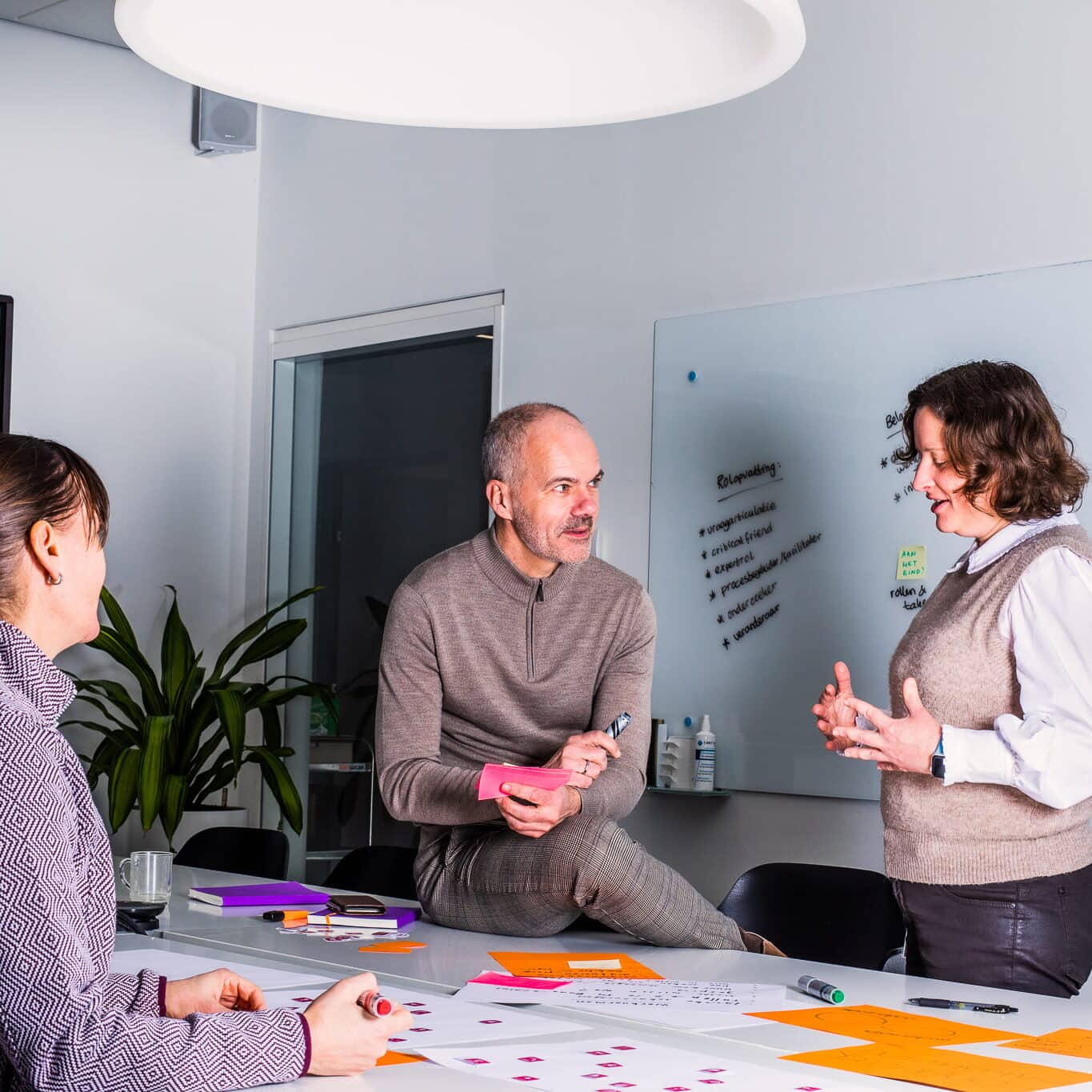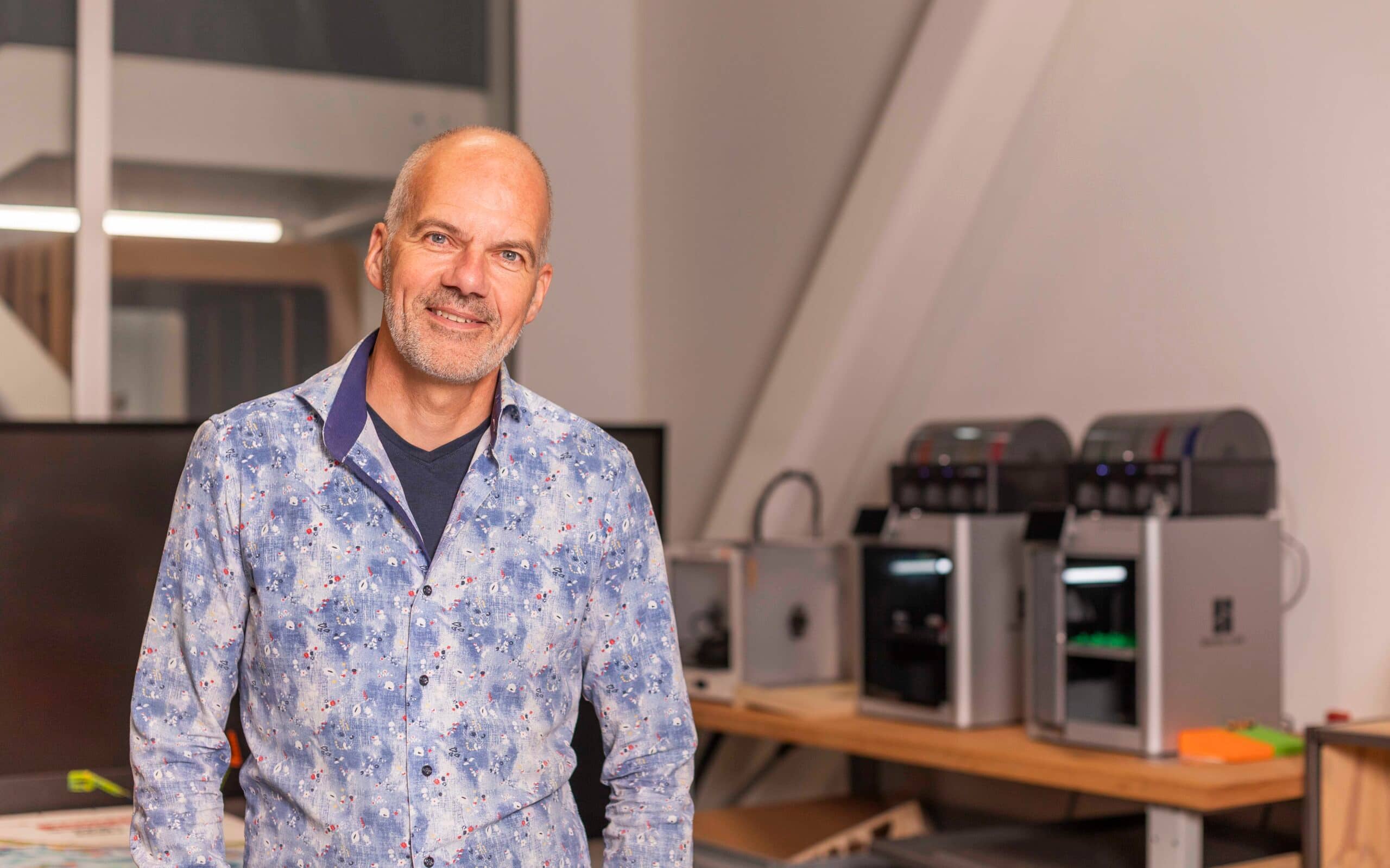AI is developing at lightning speed. Governments, businesses and educational institutions are examining the opportunities, risks and ethical issues involved. SintLucas is also actively researching the impact of AI on education and creative professions. We spoke to Erno Mijland, educational advisor and recently appointed practor of the new SintLucas practoraat Technology as a partner of creative makers.
Research
Erno: “Within the practoraat, we are investigating how technology, including AI, influences the work of creative makers. The word ‘partner” in the name was chosen deliberately: it’s about how you use technology and remain in control. Using your toolbox consciously.’
The practoraat has formulated four research questions to get started. These questions will be refined and expanded during the course of the project. Erno:
‘Changing labour market
First and foremost, we are investigating what AI means for tasks, functions and work processes in the creative sector. A practical example is Photoshop. Some operations that previously required manual actions can now be performed with a single prompt or mouse click.
Curriculum development
With knowledge of current technological developments in the field, the next question is how we should prepare students for their future working environment.
Ethics and values
Thirdly, we focus on the ethical side of AI: what are our values in this regard? The European Union’s AI Act is an example of how values can be translated into agreements on the use of AI. Think of watermarks that indicate the extent and form in which AI has been used for an image. And there is discussion about the danger of fake news, the power of Big Tech and sustainability. Some students and teachers do not use AI because it takes a lot of energy. Could this be a choice?
Methodologies and monitoring
Finally, we are developing methodologies to better monitor and respond to technological developments. We currently have no working method for this. Every programme has its pioneers and followers. Developments are happening so fast that we need to work together in a targeted manner to predict what things will look like in a year’s time, for example, and how we can respond to them.

Involving the professional field and colleagues in education
The practoraat runs for four years and works with five teacher-researchers, representing all four MBO clusters. This creates a direct link with the professional field and students. Regarding the collaboration with the professional field and colleagues in education, Erno says: ‘The business community is actively involved. We already have experience with this in various forms, including with the Advisory Councils. AI has been a topic of discussion there before. We are also going to bring companies into dialogue with each other so that they can learn from each other. Through Next by SintLucas, we offer training courses and themed sessions. And we discuss this theme with alumni who are experiencing the impact of AI in the professional field.’

Current practice
A number of lecturers are already using AI in education. Erno: ‘We are developing assignments that allow students to explore AI. For example, a lecturer might ask students to design a wine label and then use AI to visualise it on a bottle in a suitable setting. This allows students to experience how AI can enhance their creative ideas. In the coming period, we will mainly be experimenting and researching. We are still discovering and exploring the world of AI with colleagues who are already doing a lot with new technologies within SintLucas and in our network. We use the codes of conduct for students and teachers in the design and evaluation of projects. The core principle is to use AI where it adds value, but to keep the creative process central. Ultimately, as a creator, you must be able to justify and explain how you arrived at a particular result.
Opportunities and drawbacks
How does Erno himself see the opportunities and drawbacks of AI? ‘AI supports the creative process, for example in creating visualisations and prototypes. But the risk is complacency. I compare it to the e-bike: if you have a regular bike and an e-bike, it’s easy to always take the e-bike. But you cycle for your fitness. Making the effort – also in the creative process – becomes a conscious choice.”

What is a practoraat?
A practoraat is a platform within a vocational education institution where research is conducted into issues arising from social and technological developments. The research is practice-oriented and must contribute to innovation, knowledge sharing and professionalisation. It is carried out by a practor and teacher-researchers, who also involve other stakeholders, such as students and the regional business community. The objectives of a practorate include improving the quality and relevance of education and strengthening the connection between education, the professional field and research. The role of the practor is that of figurehead and driving force. The practor is the figurehead of the practoraat. The practor stimulates the development and application of knowledge and promotes its internal and external dissemination.
